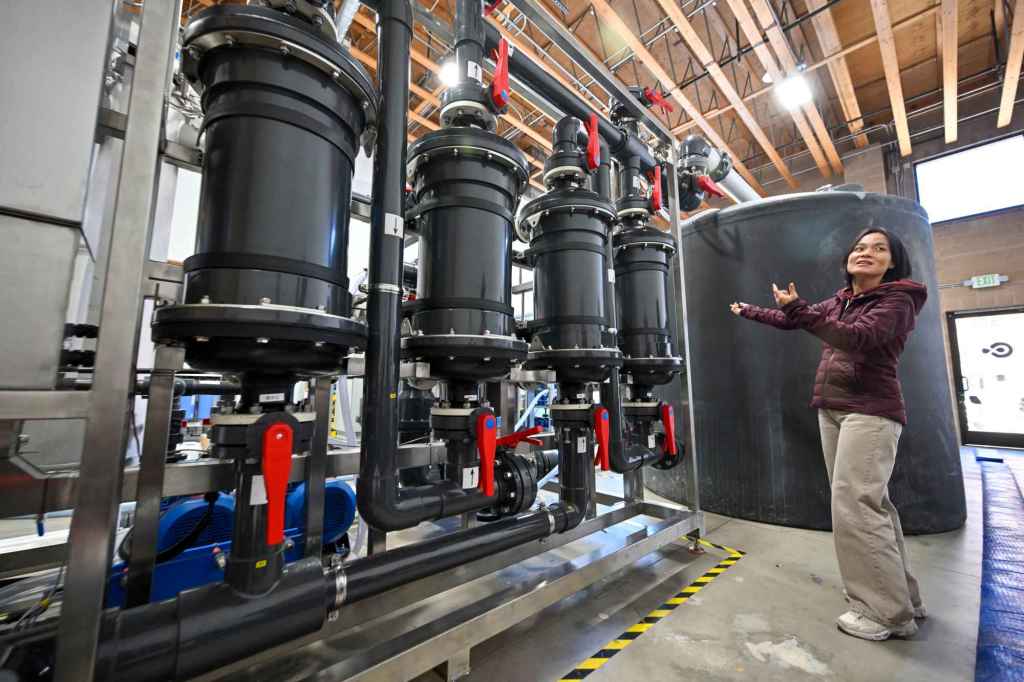Picture a can of Coke.
When you first pop the top, carbon dioxide pumped into the sugary liquid delivers that beloved effervescent fizz. But soon, the soda starts to go flat. That’s because gases tend to move from areas of high to low concentration. And since our atmosphere is only 0.04% carbon, the concentrated carbon dioxide in the Coke will bubble out until it’s more balanced with the non-effervescent air around it.
The process also works in reverse. If the liquid has less carbon than the air, it’ll draw carbon from the atmosphere.
That principle is the basis for a nascent industry bubbling up in Southern California that aims to use the ocean itself as a tool to fight climate change.
To date, most proposals to remove carbon from the atmosphere have focused on trying to scrub the greenhouse gas directly from the air. But that form of carbon capture is proving to be a pricey and underperforming endeavor, prompting pushback from environmental groups. So some interest and funding is now pivoting to a process known as direct ocean carbon capture, where technology is used to remove carbon from the ocean so it will naturally pull more carbon out of the air.
Thanks to recent infusions of public and private dollars, two local startups are testing different ocean carbon capture systems off the coasts of Orange and Los Angeles counties. Each hopes to scale up the technology for commercial markets within the next few years, which advocates say could slow global warming that’s already raising sea levels, triggering more intense weather patterns and posing other challenges around the globe.
“It’s huge. It’s existing. It’s free of charge. It’s already built,” Steve Oldham, CEO of Captura, which is running a pilot test off Newport Beach, said of the sea.
“So it’s a very powerful method, we think, of removing CO2 from the atmosphere.”
Lots of questions remain, from the cost and scalability of the technology to where the carbon will go and how it…
Read the full article here







